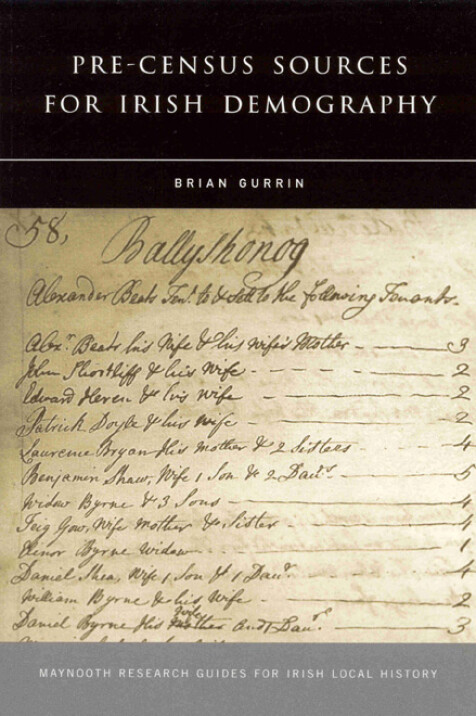Pre-census sources for Irish demography
Brian Gurrin
This book focuses on how local historians can source and use the various censuses and universal taxation returns and a variety of other sources of the pre-census period to build up a population picture of a community or a local area. To set the scene, a brief history of enumeration in Ireland is outlined and the key population sources are introduced. The earliest sources considered in detail are the 1660 poll-tax return (commonly known as Pender's Census) and the hearth-tax rolls. All known available hearth-tax rolls are listed in an appendix.
The various religious censuses of the eighteenth century are also examined and particular attention is paid to the most well known of these, the census of 1766. The use of non-'census' sources such as church and estate record is also considered. It is shown that these non-census sources can provide much useful information that would not be apparent from census substitutes. Problems with working with these sources are outlined and examples of population studies, both Irish and non-Irish, are given. Although this book is written with the local historian in mind it will also be of much interest to genealogists and family historians.
Brian Gurrin is a graduate of NUI Maynooth and author of A century of struggle in Delgany, Wicklow and Rathcoole (Irish Academic Press, 2000).

